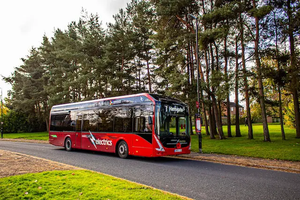Transportation in Africa

Transportation is a crucial component of any economy, and Africa is no exception. With a population of over 1.3 billion people spread across 54 countries, the continent faces significant transportation challenges. However, there have been notable improvements in recent years, thanks to investments in infrastructure and technology.
One of the main transportation challenges in Africa is the lack of adequate road networks. Many African countries have poorly maintained roads that are impassable during the rainy season, making it difficult to transport goods and people. This has led to the development of alternative transportation modes such as rail, air, and water transport.
Rail transportation is an essential mode of transportation in Africa, with several countries investing heavily in the sector. For instance, the Chinese government has financed several rail projects across the continent, including the Nairobi-Mombasa railway in Kenya and the Lagos-Kano railway in Nigeria. These projects have improved the movement of goods and people, reducing the time it takes to travel between cities.
Air transport has also witnessed significant growth in recent years, with several African airlines expanding their fleet and routes. Ethiopia Airlines is one of the leading airlines on the continent, with a vast network of destinations in Africa, Europe, Asia, and the Americas. Other airlines such as RwandAir, Kenya Airways, and South African Airways have also expanded their operations, connecting different parts of Africa to the rest of the world.
Water transport is another critical mode of transportation in Africa, especially for countries with access to the sea. Ports such as Durban in South Africa, Mombasa in Kenya, and Lagos in Nigeria are some of the busiest ports on the continent, handling millions of tons of cargo every year. Inland water transport is also vital, especially in countries such as the Democratic Republic of Congo, where the Congo River is a lifeline for transportation.
Technology has also played a significant role in improving transportation in Africa. Mobile technology has enabled the development of ride-hailing apps such as Uber, Taxify, and Little, which have revolutionized the taxi industry in several African cities. In addition, several countries have implemented cashless payment systems for public transport, making it easier for commuters to pay for fares.
In conclusion, transportation in Africa has come a long way, with significant improvements witnessed in recent years. Although the continent still faces several challenges, such as inadequate road networks, investments in rail, air, and water transport, coupled with technological advancements, have significantly improved the movement of goods and people. With continued investment in infrastructure and technology, transportation in Africa will undoubtedly continue to improve, contributing to the overall economic growth of the continent.







